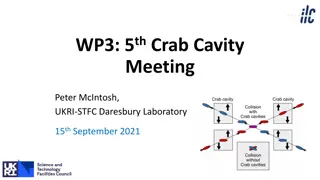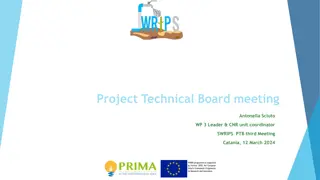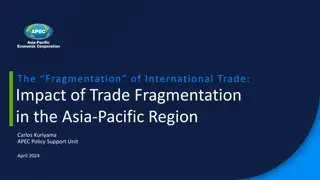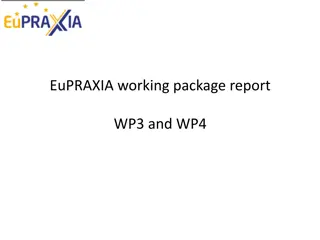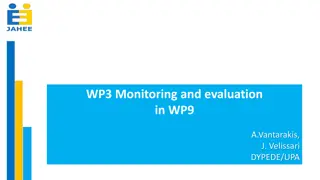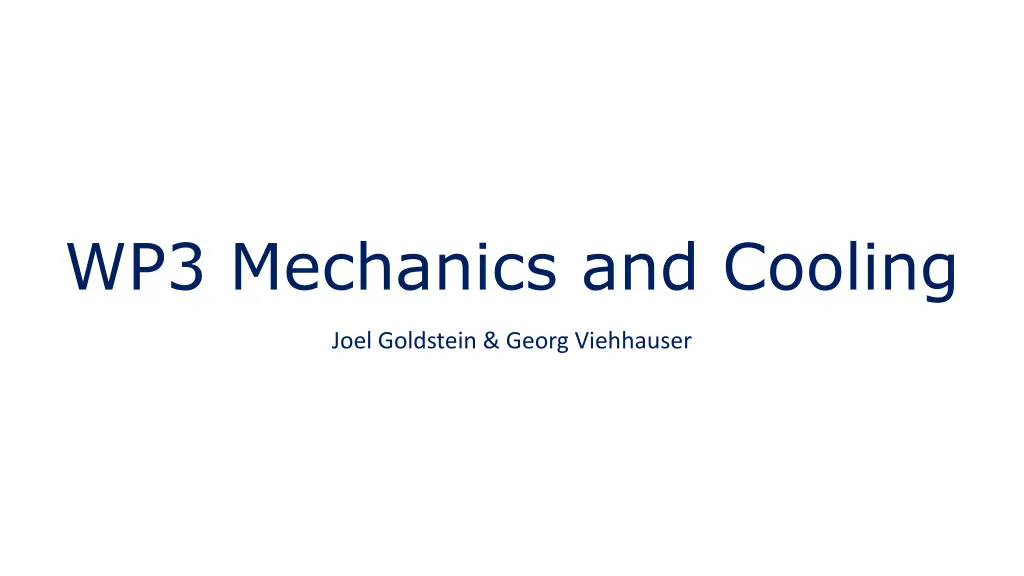
Mechanics and Cooling Technologies for Future Trackers
Develop advanced technologies and designs for future trackers, focusing on mechanics and cooling solutions to maximize performance and efficiency. Includes suggested projects for low-mass support geometries, additive manufacturing, fluid cooling components, and predictive modeling. Explore innovative approaches such as evaporative cooling, microchannels in silicon, and 3D printing applications for improved functionality.
Download Presentation

Please find below an Image/Link to download the presentation.
The content on the website is provided AS IS for your information and personal use only. It may not be sold, licensed, or shared on other websites without obtaining consent from the author. If you encounter any issues during the download, it is possible that the publisher has removed the file from their server.
You are allowed to download the files provided on this website for personal or commercial use, subject to the condition that they are used lawfully. All files are the property of their respective owners.
The content on the website is provided AS IS for your information and personal use only. It may not be sold, licensed, or shared on other websites without obtaining consent from the author.
E N D
Presentation Transcript
WP3 Mechanics and Cooling Joel Goldstein & Georg Viehhauser
Purpose of the WP 1. Develop technologies and designs to be used in the demonstrator Technologies that are advanced, but still have reasonable chance of success Develop technologies for future trackers Activities that go beyond what is standard now, and beyond what designs for near-future experiments (ATLAS, ePIC) can rely on In principle not limited to a specific silicon sensor technology For mechanical aspects not limited to a specific flavor (low-mass is a general requirement) This includes conductive heat transfer Main flavor-specific technology is forced convection cooling (gas vs evaporative) But even there are some common issues (connections, distributions) At this point, it is hard to put a price tag on these items This depends on the breadth (number of groups) and depth (how far ar our aspirations) of this effort The list of activities we will present is a list of possibilities, not necessities This will only be clear once groups have indicated their interests Providing mechanics and cooling for the demonstrator is a different WP 2. 2
Suggested projects I Low-mass local support geometries and structures Structures that maximize moment of inertia and are not joint-dominated Shape-optimisation to reduce global and local deformations Staves or larger structures (wedges, box channels, cylinders, etc.) Structures for bent or inclined modules Evaporative cooling New coolants (N2O, Kr, ) to reduce evaporation temperature (see for example https://indico.cern.ch/event/853861/contributions/4841295/, https://indico.cern.ch/event/1228295/contributions/5394883/) Transcritical cycles (https://indico.cern.ch/event/1228295/contributions/5393800/) Integration of cooling channels in substrate/structure Microchannels in Silicon Thin-wall cooling pipes co-cured with CF (see ALICE) Melting or vaporising pre-forms (e.g. Modified poly(lactic) acid (PLA)) in CF (see https://indico.cern.ch/event/853861/contributions/4867438/) 3
Suggested projects II Additive manufacturing Metals (Al or Ti), plastics Structural elements (fibrous matrices) Components for fluid cooling systems (connections, manifolds, etc.) (https://indico.cern.ch/event/1268355/contributions/5354878/attachments/2629949/4548907/2023-04- 17_ITK%20-COOLING-3D-PRINTED-MANIFOLD-INFN-MILANO.pptx) Cleaning (https://indico.cern.ch/event/1228295/contributions/5390907/) Distributions/ flow guidance for gas cooling Printing of fibre-loaded material Can we 3D-print a tracker? Fluid system connection technologies Welding/brazing for metallic pipes Gluing etc. for ceramics/plastics/silicon Gas cooling Flow design Prediction models Vibration loads on structures Development of instrumentation for local gas flow velocity measurement (MEMS?) Either mechanical (vane) or calorimetric (see for example https://www.sciencedirect.com/science/article/pii/S0924424719302559) 4
Suggested projects III Low mass hybrid development ?? Robotics Assembly/Disassembly support within structural supports/integration Maintenance after irradiation Maintenance during operation Disassembly after irradiation Mass production techniques/Robotic assembly and testing Says it all Novel structural materials Composites (printable?) Ceramics 5
Suggested projects IV Electrical and optical service integration and co-curing Co-curing of cables and low-mass tapes Co-curing of optical fibres for signals Co-curing of optical fibres for stress and displacement measurements/environmental monitoring Software tools for design and mechanical simulations Design and simulation of composite structures Simulation of coolant flow (in particular gas cooling) Machine learning for structure optimisation/design Optimisation of thermal management or mechanical performance, or ultimately both together Need inputs for the training 6



